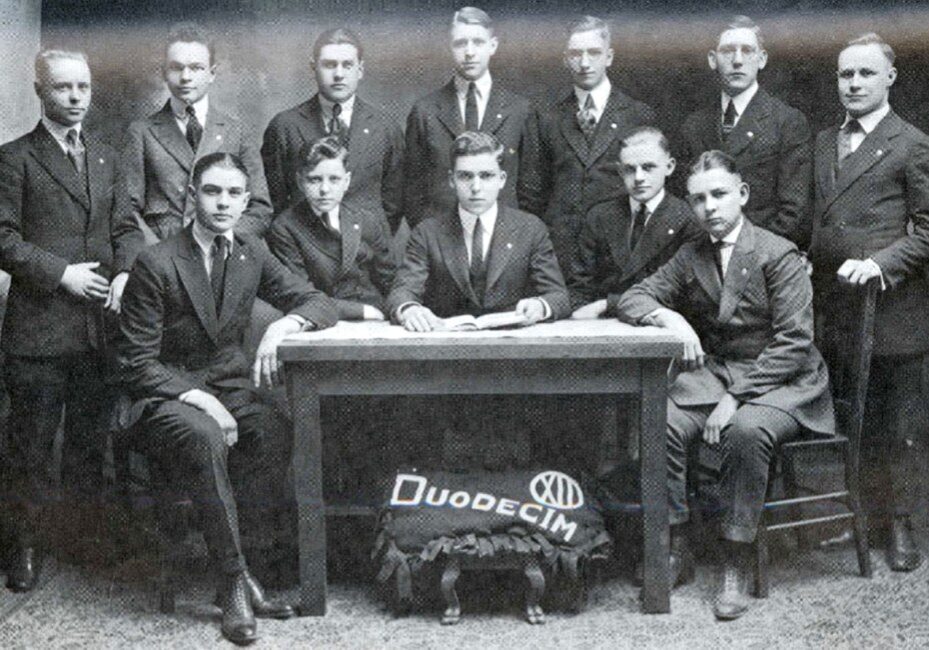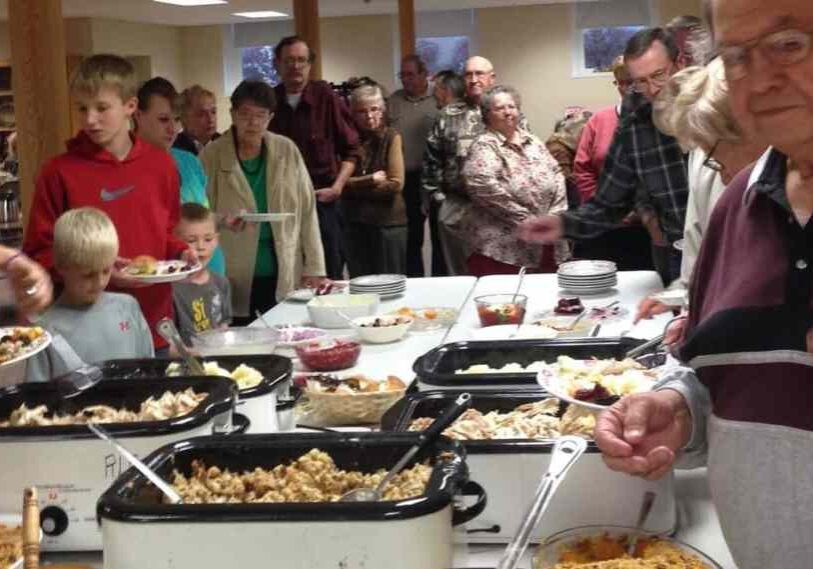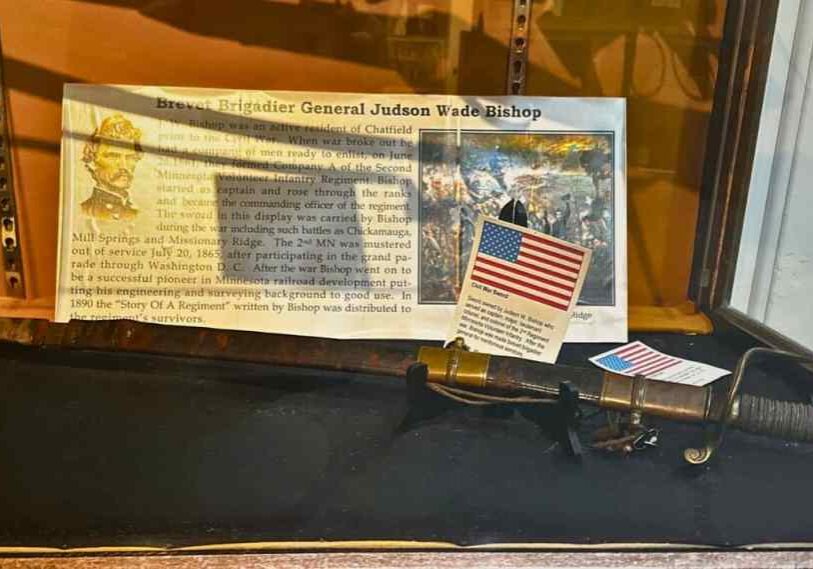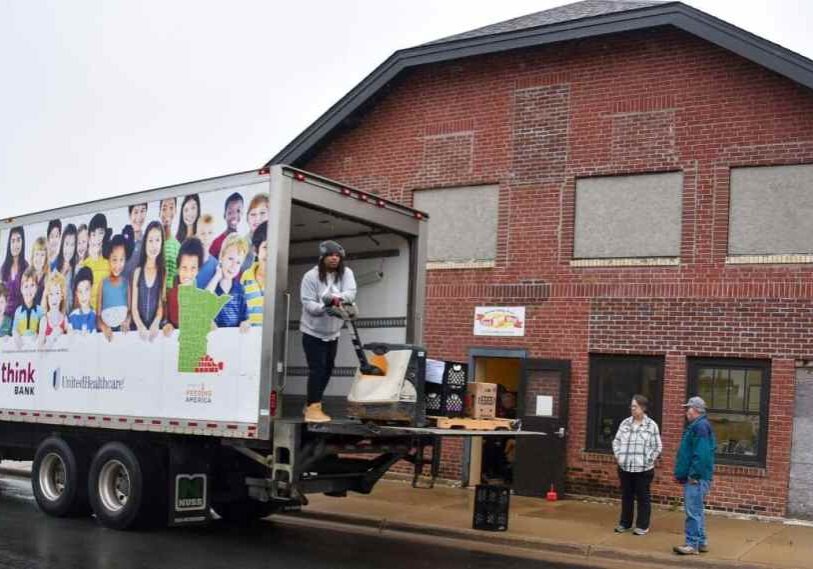The Fabric that Binds: A Family’s History

GRAND MEADOW – This summer I’ll attend a family reunion of the descendants of Henry and Catherine (McCloskey) O’Marrow in Custer, South Dakota. Henry was born in Ireland and Catherine in Kentucky. They married in 1877 and lived in Grand Meadow, Minnesota the rest of their lives.
I have been to each of the countries where my known ancestors have come from: Ireland, Germany, and Norway.
How these family lines all merged in eastern Mower County’s Grand Meadow in the late 1800s is the stuff of some kind of mystical cosmic alignment. But famine, economic opportunity and circumstance all played a role in how they came to America and ended up in a small town on the edge of the prairie.
Grand Meadow is where my parents were born, grew up, met and married in the 1930s and where I would often visit my grandmothers — Mary O’Marrow Rother and Mattie Aamot Torgrimson — and see my cousins at family gatherings. So, even though I grew up in nearby Austin, if there is such a thing as my ancestral village, I guess it would be Grand Meadow. Not Wexford, Ireland; Upper Silesia, Prussia; nor Valdres, Norway.
Grand Meadow is the intersection where all of these individual families meet up. And my five sisters and I were a result of that confluence.

Left to right, Maggie O’Marrow, the author’s mother Phyllis Rother Torgrimson, and his grandmother Mary O’Marrow, at a birthday party in Grand Meadow, circa 1955. The author is pictured on the left along with his two cousins. (Family photo)
The O’Marrows

The Celtic cross is a hallmark of cemeteries in Ireland. It is estimated that one million Irish perished during the potato famine between 1845 and 1855. (Photo by John Torgrimson)
Wexford is a coastal county in the southeast of Ireland, a few hours drive from Dublin through the Wicklow Mountains. My great-grandfather Henry O’Marrow was five when his family left Wexford in 1855 to escape famine. One estimate put potato famine deaths in Ireland between 1845 and 1855 at one million people.
The O’Marrows along with nearly two million other Irish fled the famine by emigrating to America. So great was the exodus that by the early 1900s there were more Irish-born living in the United States than in Ireland.
Henry’s family of father Thomas, mother Bridget (Murphy), and younger brother Denis settled in Beaver Dam, Wisconsin.
At 17, Henry moved to the Irish enclave of Simpson, near Rochester, Minnesota, where he found work and met his future wife Catherine McCloskey, whose family originated in County Tyrone in Northern Ireland.
Henry and Catherine settled in Grand Meadow. My grandma Mary was one of six children that included brothers Thomas, James, Frank, and sister Margaret.
Mary and Maggie were the youngest, just 10 and 8, when their mother died of tuberculosis. Before she died, Catherine gave birth to a baby boy christened Henry after his father. Unable to care for the child with the loss of his mother, his father asked the Grimes family in Grand Meadow, who were childless, to raise his namesake.
It was normal to farm out children to relatives when tragedy struck a family. While Henry kept the three boys at home, Mary and Maggie were sent to live with relatives in Devils Lake, North Dakota. But two years later a hired hand concerned about the care of the two girls alerted their father who came and got them.

The author biking in Inishmore, the largest island in the Aran Islands on Ireland’s west coast. (Photo by Pat Torgrimson)
The Rothers
My maternal grandfather Joe Rother’s great grandparents Franz and Katharina (Klein) Rother settled in Dakota County
near Hastings, Minnesota. A German-Catholic family, they originated in Upper Silesia, which was a part of Prussia, as well as Poland, Czechoslovakia and Germany at different times. This area was where the Nazis invaded Poland at the
start of World War II and near where they would build the concentration camp Auschwitz. By then the Rothers had moved to America.
It is unclear why they left Poland, but as Catholics and a German minority they may have faced hardships and discrimination.
A butcher by training, Joe moved south to Grand Meadow where he found work. He eventually met and married my grandmother Mary.
My mother Phyllis Rother was the eldest of three children. She had two brothers, Francis and Paul. Francis died of tuberculosis and Paul was killed in the Battle of the Bulge in World War II.
The Torgrimsons and Aamots

The tombstone of the author’s great-great grandfather Franz Rother at St. Marys church cemetery in New Trier, Minnesota, near Hastings. (Photo by John Torgrimson
Erik Torgrimson met his wife Olava Torkelson Flaskrud in the town of Nes, about 80 miles north of Oslo, where he was a teacher. In 1869, looking for economic opportunity they emigrated to America.
From 1820 to 1900, 800,000 Norwegians came to America in what is known as “chain migration” where one relative sponsored another, and
so on.
The couple came first to Fillmore County where Olava’s brother, Erik Torkelson had homesteaded in Pilot Mound Township in the 1850s. Torkelson Creek near Lanesboro is named after him.
Erik Torgrimson taught catechism at Root Prairie Lutheran Church near Fountain and later bought a farm nearby. Erik and Olava eventually moved to Grand Meadow where he opened up a hardware store.
Their son Gabriel would become my grandfather and marry Mattie Aamot, whose parents, Aslak and Thora (Lindeline) Aamot, came from Renlie in Valdres, Norway. My dad Rolf was one of nine children.
Aslak Knutson Aamot first settled in Mt. Horab, Wisconsin before coming to Grand Meadow, joining a Norwegian settlement of immigrants who came from the Valdres area of Norway. He donated some of his farmland to build Bear Creek Lutheran Church, north of town. My Torgrimson and Aamot ancestors are buried in its cemetery.
A Family of Immigrants
In 1982, when I moved to the Lanesboro area, my mother said, “You may have relatives down there.” This was before I knew anything about Torkelson Creek or the fact that my great-grandfather Torgrimson first settled near Fountain.

The family of Erik and Olava Flaskrud Torgrimson. Erik taught catechism at Root Prairie Lutheran Church, near Fountain, Minnesota in 1870. The author’s grandfather Gabriel, is pictured second from the left in the back row. (Family photo)
Learning about his time at Root Prairie Lutheran Church I walked the cemetery one day, only to discover a one-year-old Emily Thorgrimson buried there.
This was after my own daughter Emily was born. I found the coincidence interesting. The older I got, the more curious I became about my heritage. My sisters and I are third generation Americans, old enough to remember tales from the old country, but distant enough to forget most of the details.
In 2017, my two children and I traveled to Norway, staying at a distant cousin, Terje Mikael Hasle Jorander’s farmhouse close by Renlie in Valdres where the Aamots came from, and near Torrisplassen where the Torgrimsons originated. We were able to visit the small farms where our forebearers spent their formative years.
Two trips to Ireland and a recent trip to Germany also gave me a sense of place. If every rock were a Euro, Ireland would be the richest country in the world. And yet it is a country with a proud culture of literature and music.

Some of the third, fourth, and fifth generation descendants of O’Marrow/Rother and Aamot/Torgrimson families gather in 2022, at the end of the pandemic. (Photo by Emily Torgrimson)
While I expected both agricultural and industrial activity in Germany, I was surprised by the cultural activity in the countryside. My wife and I stumbled upon a town festival celebrating the potato harvest only to see the village square full of music and dancing.
So, just like in the Old Testament, where so and so begat so and so, my parents, Rolf and Phyllis arrived in the world in Grand Meadow in 1911 and 1913 respectively, the offspring of Norwegian and German-Irish relationships. A Norwegian Lutheran and an Irish/German Catholic, they scandalized the community when they got married in 1937.

Terje Mikael Hasle Jorander (left) of Renlie, Norway, and the author meet at Bear Creek Lutheran Church north of Grand Meadow. Their ancestor Aslak Aamot donated some of this land for the church. (Family photo)
Over the years I have become the repository for Torgrimson family artifacts. I have my grandfather Gabriel’s collection of classic books, from Oliver Twist to the Pickwick Papers. I also have an architectural drawing of the Lunde genealogy tree, which goes back to 1641, linking the Torgrimson’s to one Gulbrand Lunde in Norway.
I have my great-grandfather Henry O’Marrow’s captain’s chair where he would hold court at my grandmother’s home in Grand Meadow. This summer I will meet up with my Irish kinfolk in South Dakota, descendants of Henry and Catherine O’Marrow. I will see my cousins and meet their children and their grandchildren and tell them stories, as I know them, about their great-great grandparents who came to this country more than 150 years ago. And how our origin story is part of America’s story.






